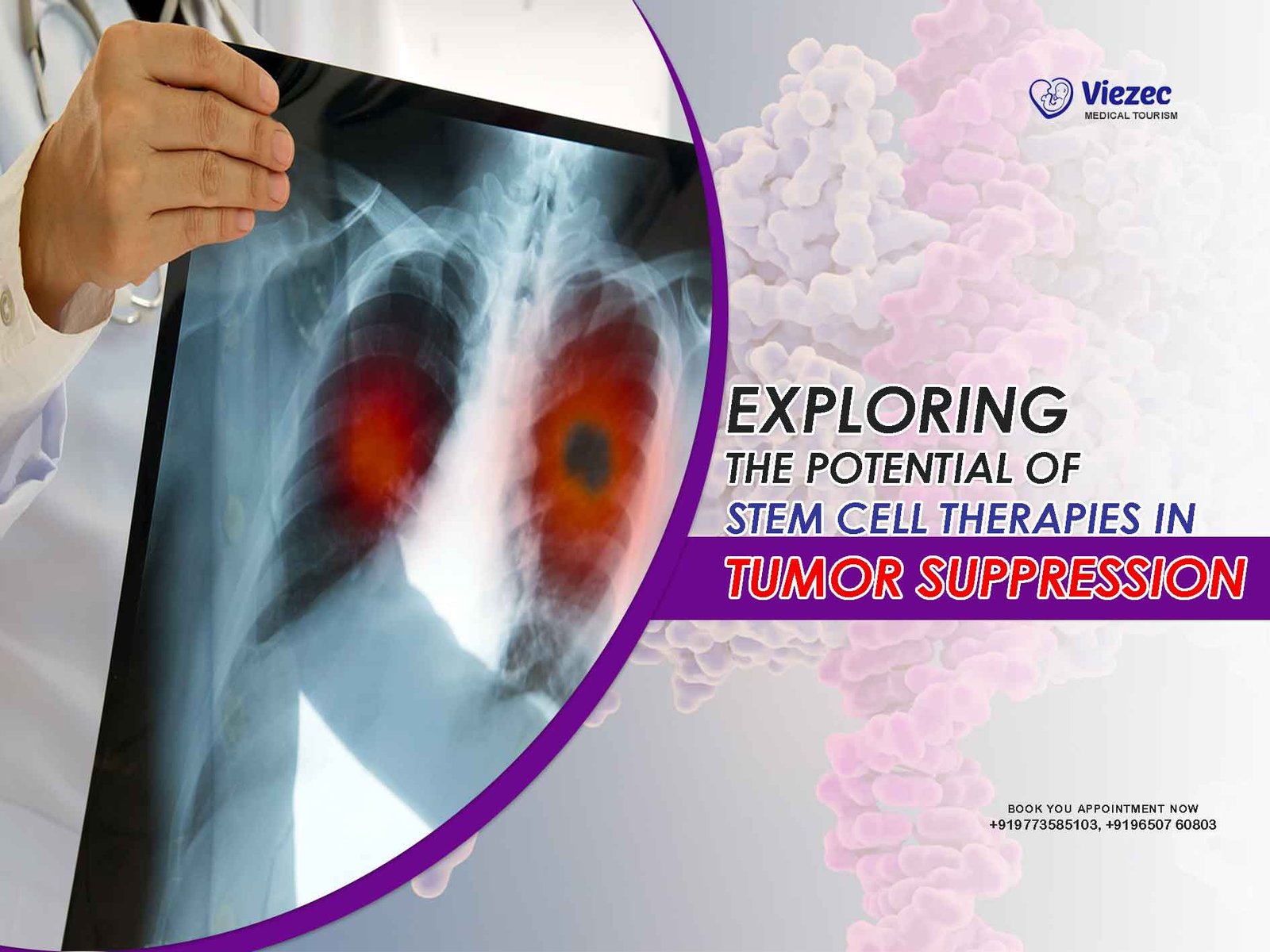Cancer remains one of the most formidable challenges in medicine, with conventional treatments such as chemotherapy, radiation, and surgery often falling short in cases of advanced disease or aggressive tumors. However, recent advancements in stem cell research have sparked considerable interest in exploring their potential role in tumor suppression. Stem cells possess unique properties that make them promising candidates for novel therapeutic strategies in combating cancer. We will explore the mechanisms underlying stem cell therapies and their application in tumor suppression, highlighting both opportunities and challenges in this rapidly evolving field.
Understanding Stem Cells and Their Characteristics
What Are Stem Cells?
Stem cells are undifferentiated cells characterized by their ability to self-renew and differentiate into specialized cell types. They serve as the foundation for the development and maintenance of various tissues and organs in the body. Stem cells are broadly categorized into embryonic stem cells (ESCs) derived from early-stage embryos and adult stem cells found in mature tissues such as bone marrow, adipose tissue, and the brain.
Characteristics of Stem Cells
Stem cells possess several unique characteristics that distinguish them from differentiated cells:
- Self-Renewal: Stem cells can divide indefinitely, producing identical copies of themselves while maintaining their undifferentiated state.
- Pluripotency: Embryonic stem cells have the potential to differentiate into any cell type in the body, giving them pluripotent capabilities.
- Multipotency: Adult stem cells are multipotent, meaning they can differentiate into a limited range of cell types specific to the tissue from which they are derived.
- Tumor Homing Abilities: Certain stem cells exhibit tropism towards tumors, migrating to and accumulating within the tumor microenvironment.
Mechanisms of Stem Cell-Mediated Tumor Suppression
Stem cells exert their tumor-suppressive effects through various mechanisms, which can be broadly categorized as direct and indirect actions.
Direct Actions
- Cell Replacement: Stem cells can differentiate into functional cells to replace damaged or cancerous cells within tissues, restoring normal physiological functions.
- Immune Modulation: Stem cells possess immunomodulatory properties, regulating the immune response within the tumor microenvironment. They can enhance anti-tumor immunity by activating cytotoxic T cells and natural killer cells while suppressing immunosuppressive mechanisms employed by tumors.
- Apoptosis Induction: Stem cells can induce programmed cell death (apoptosis) in cancer cells through the secretion of pro-apoptotic factors or direct cell-to-cell contact.
Indirect Actions
- Stromal Remodeling: Stem cells contribute to the remodeling of the tumor stroma, altering the extracellular matrix and modulating signaling pathways involved in tumor progression and metastasis.
- Angiogenesis Inhibition: Stem cells can inhibit tumor angiogenesis, the process of forming new blood vessels to supply nutrients and oxygen to the tumor. By secreting anti-angiogenic factors, stem cells impede the growth and spread of tumors.
- Drug Delivery Vehicles: Stem cells can serve as targeted drug delivery vehicles, delivering therapeutic agents directly to tumor sites while minimizing off-target effects and systemic toxicity.
Applications of Stem Cell Therapies in Tumor Suppression
The potential applications of stem cell therapies in tumor suppression are diverse and encompass various strategies:
- Stem Cell Transplantation: Transplantation of exogenous stem cells, either embryonic or adult-derived, offers a direct approach to replenishing damaged or depleted tissue and exerting tumor-suppressive effects within the tumor microenvironment.
- Genetic Engineering: Stem cells can be genetically modified to enhance their anti-tumor properties, such as overexpressing tumor-suppressor genes or engineering them to secrete therapeutic proteins with anti-cancer activity.
- Combination Therapies: Combining stem cell therapies with conventional treatments such as chemotherapy or immunotherapy holds promise in enhancing treatment efficacy and overcoming resistance mechanisms.
- Tissue Engineering: Utilizing stem cells in tissue engineering approaches to develop organoids or tissue constructs for drug testing and personalized cancer therapy.
Challenges and Future Directions
While the potential of stem cell therapies in tumor suppression is promising, several challenges must be addressed to translate these findings into clinical applications:
- Safety Concerns: Concerns regarding the tumorigenic potential of stem cells, particularly embryonic stem cells, and the risk of unintended consequences from genetic modifications.
- Immune Rejection: The potential for immune rejection following stem cell transplantation, necessitating strategies to mitigate immune responses and promote long-term engraftment.
- Ethical and Regulatory Considerations: Ethical considerations surrounding the use of embryonic stem cells and the need for stringent regulatory oversight to ensure patient safety and ethical standards are upheld.
- Optimizing Delivery and Integration: Strategies to enhance the homing, engraftment, and integration of stem cells within the tumor microenvironment to maximize their therapeutic efficacy.
Stem cell therapies hold immense potential in tumor suppression through their multifaceted mechanisms of action and unique properties. Continued research efforts aimed at overcoming existing challenges and optimizing therapeutic strategies are essential to harness the full therapeutic potential of stem cells in combating cancer. With further advancements in stem cell technology and translational research, these innovative approaches have the potential to revolutionize cancer treatment paradigms and improve patient outcomes in the future.









